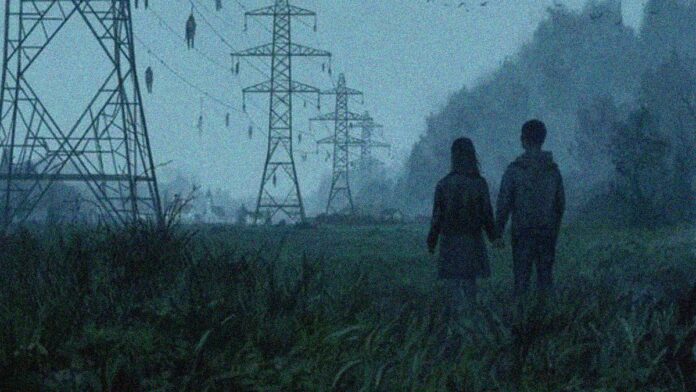Dreams have long been a fascinating and mysterious aspect of human consciousness. Throughout history, people have tried to understand why we dream, and what the purpose of our dreams might be. Some believe that dreams have a spiritual or supernatural meaning, while others believe that they are simply the byproduct of random brain activity during sleep. Today, science has shed some light on the mystery of why we dream, but there is still much we don’t know. In this article, we will Explore the Mysteries of Dreams and Theories and Explanations.
Contents
- 1 What happens in the brain during dreaming?
- 2 The functions of dreaming
- 3 The importance of dreaming
- 4 Dreams and creativity
- 5 Theories of Dream
- 6 Why aren’t we able to see clocks in our dream
- 7 Do we see our parallel selves in dreams?
- 8 we are living in a simulated world and our dream we see our real self
- 9 Conclusion
- 10 Sources
What happens in the brain during dreaming?
Scientists have used advanced imaging techniques to study the brain activity of people during sleep and dreaming. They have found that during dreaming, different regions of the brain become more active than during wakefulness. For example, the amygdala, which is associated with emotions, becomes more active during dreaming, while the prefrontal cortex, which is responsible for logical thinking, becomes less active. This may explain why our dreams often seem illogical or emotional.
The functions of dreaming
While the exact purpose of dreaming is still not fully understood, scientists have proposed several theories about the functions of dreaming. One of the most popular theories is that dreaming helps us process emotions and memories. During dreaming, the brain may reorganize and consolidate memories, and work through emotional experiences from the day. This may explain why we often have dreams about people or events that we have encountered recently.
Another theory is that dreaming is a way for the brain to problem-solve and explore new possibilities. During dreaming, the brain can create new scenarios and test out different solutions to problems. This may explain why we sometimes have dreams that seem bizarre or impossible, as the brain is free to explore without the constraints of reality.
The importance of dreaming
While it’s not entirely clear why we dream, studies have shown that dreaming is important for our overall health and well-being. People who are deprived of REM sleep, the stage of sleep when most dreaming occurs, can experience a range of negative effects, including memory problems, irritability, and difficulty concentrating.
Dreaming may also play a role in regulating our moods and emotions. People who suffer from depression or anxiety often have disrupted sleep patterns and may have more vivid or disturbing dreams. By understanding the role of dreaming in emotional processing, scientists may be able to develop new therapies to help people cope with mental health conditions.
Dreams and creativity
Many creative people have reported using their dreams as inspiration for their work. Salvador Dali, the famous artist, used to take naps holding a key in his hand, so that when he fell asleep, the key would fall and wake him up, and he could capture the images from his dreams before they faded away. Paul McCartney famously wrote the melody for the Beatles’ hit song “Yesterday” after hearing it in a dream.
Research has shown that dreaming can enhance creativity by allowing the brain to make new connections and explore ideas in a less inhibited way. By tapping into the creative potential of our dreams, we may be able to unlock new insights and ideas that we wouldn’t have considered otherwise.
Theories of Dream
There are many theories about the purpose and function of dreams, and different theories may focus on different aspects of the dream experience. Here are some of the most prominent theories of dreaming:
- Psychoanalytic theory: Developed by Sigmund Freud, this theory posits that dreams represent a window into our unconscious desires and conflicts. According to this theory, dreams are a way for our unconscious mind to express repressed or taboo thoughts and feelings in a disguised or symbolic form.
- Activation-synthesis theory: This theory suggests that dreams are a result of random neural activity in the brain that is then interpreted and organized by the brain into a coherent narrative. According to this theory, dreams have no inherent meaning and are simply a byproduct of the brain’s normal functioning during sleep.
- Information-processing theory: This theory proposes that dreams are a way for our brains to process and consolidate information from our waking experiences. According to this theory, dreams serve as a sort of “mental filing system” that helps us organize and make sense of the events of our day.
- Threat-simulation theory: This theory suggests that dreams are a way for our brains to practice dealing with potential threats and challenges in a safe environment. According to this theory, dreams may help us prepare for real-life challenges by allowing us to practice problem-solving and coping strategies.
- Neuroscience theory: This emerging theory suggests that dreams may be a way for the brain to reorganize and rewire itself during sleep. According to this theory, dreams may play a crucial role in maintaining and improving brain function and neural plasticity.
It’s worth noting that these theories are not mutually exclusive, and some may overlap or complement each other in various ways. Additionally, the exact purpose and function of dreams remain a topic of ongoing research and debate, and new theories and perspectives will likely continue to emerge in the years to come.
Why aren’t we able to see clocks in our dream
One of the interesting aspects of dreams is that they often contain vivid, detailed images and scenes. However, it’s not uncommon for people to report that they don’t see clocks or other time indicators in their dreams. So why is this?
Several theories attempt to explain why we may not see clocks in our dreams. One possibility is that our brains simply don’t process time in the same way during dreams as they do in waking life. Our perception of time can be distorted during dreams, which may make it difficult to accurately represent the passage of time using clocks or other time indicators.
Another theory is that our brains may simply not prioritize timekeeping during dreams. Our brains are thought to process information differently during dreams than they do during waking life, and certain functions – like timekeeping – may not be as important in the dream state as they are in waking life.
It’s also worth noting that the absence of clocks in dreams is not a universal experience. While some people report not seeing clocks in their dreams, others may see them frequently. This suggests that individual differences in dream experiences may play a role in whether or not clocks are present.
Other theories attempt to explain why we may not see clocks in our dreams. One theory is that our dreams may not follow a linear narrative structure like our waking experiences do. In other words, our dreams may not have a clear beginning, middle, and end, which can make it difficult to measure the passage of time using clocks.
Another theory suggests that our brains may be intentionally avoiding timekeeping during dreams. During sleep, our brains are thought to engage in a process of memory consolidation, where we consolidate and integrate information from our waking experiences into our long-term memory. This process may be disrupted if our brains are constantly tracking time during dreams, as it may interfere with the natural flow of the dream.
The exact reasons why we may not see clocks in our dreams are not fully understood. It’s possible that our brains process time differently during dreams, or that timekeeping simply isn’t as important in the dream state as it is in waking life. However, the absence of clocks in dreams is not a universal experience, and individual differences in dream experiences may play a role in whether or not clocks are present.
Some experts believe that the absence of clocks in dreams may simply be a reflection of the fact that our brains are not fully capable of reproducing the sensory experiences of waking life during dreams. While our dreams may contain vivid and detailed images, they may not be able to replicate the experience of seeing a clock or other time indicator with the same level of detail and accuracy as our waking experiences.
Several theories attempt to explain why we may not see clocks in our dreams. These include differences in how our brains process time during dreams, the non-linear nature of many dreams, and the idea that our brains may intentionally avoid timekeeping during sleep. While the exact reasons for the absence of clocks in dreams are not fully understood, it is clear that dreams represent a unique and fascinating aspect of the human experience that continues to be studied and explored by scientists and researchers around the world.
Do we see our parallel selves in dreams?
The idea of parallel worlds or alternate universes suggests that there may be other versions of reality that exist alongside our own. Some people believe that during dreams, we may be able to access these parallel worlds and see versions of ourselves that exist in these other realities.
While the idea of parallel worlds is an intriguing concept, it is still purely speculative at this point. There is no scientific evidence to support the existence of parallel worlds or alternate universes, and the concept remains purely theoretical.
Furthermore, while our dreams may offer insights into our subconscious mind and emotions, there is no evidence to suggest that they allow us to access other dimensions or parallel worlds. Dreams are still not fully understood by science, and their purpose and function remain a topic of ongoing research and debate.
While the idea of parallel worlds is a fascinating concept, it remains purely theoretical and lacks scientific evidence to support it. While our dreams may offer insights into our inner selves, there is no evidence to suggest that they provide a window into other dimensions or parallel worlds.
we are living in a simulated world and our dream we see our real self
The simulation theory is an idea that has gained popularity in recent years, and it suggests that the world we live in may be a computer simulation created by a more advanced civilization. According to this theory, the reality we experience is not real, but rather a simulation created by an advanced intelligence.
Some proponents of the simulation theory argue that our dreams may offer a glimpse into our true selves, which exist outside of the simulation. They suggest that in our dreams, we can tap into a deeper reality that lies beyond the simulation. This theory suggests that while we are living in a simulated world, our dreams offer a connection to something more authentic.
However, it’s important to note that the simulation theory is just a theory, and there is currently no scientific evidence to support it. While it’s an interesting concept to consider, it’s not something that can be proven or disproven at this time.
Additionally, the idea that our dreams show us our true selves outside of the simulation is just speculation, and there is no evidence to support this claim. Dreams are still not fully understood by science, and while they may offer insights into our emotions and memories, they are unlikely to be a portal to another reality.
In conclusion, while the simulation theory is an interesting idea, it remains a speculative theory without scientific evidence to support it. While our dreams may offer insights into our subconscious mind, there is no evidence to suggest that they connect us to a deeper reality beyond our simulation.
Conclusion
Dreams have fascinated people for thousands of years, and science is starting to shed some light on the mystery of why we dream. While we still don’t fully understand the purpose of our dreams, research has shown that they play an important role in our mental health and wellbeing, and may even be a source of creative inspiration. By continuing to study the brain during sleep and dreaming, we may be able to unlock even more of the secrets of this fascinating aspect of human consciousness.
Sources
- “The Interpretation of Dreams” by Sigmund Freud
- “The Committee of Sleep: How Artists, Scientists, and Athletes Use Dreams for Creative Problem-Solving
- “Why We Sleep: Unlocking the Power of Sleep and Dreams” by Matthew Walker
- “The Secret World of Sleep: The Surprising Science of the Mind at Rest” by Penelope A. Lewis
- The American Psychological Association
- The National Sleep Foundation
FACT CHECK: We strive for accuracy and fairness. But if you see something that doesn’t look right, please Contact us.
DISCLOSURE: This Article may contain affiliate links and Sponsored ads, to know more please read our Privacy Policy.
Stay Updated: Follow our WhatsApp Channel and Telegram Channel.














